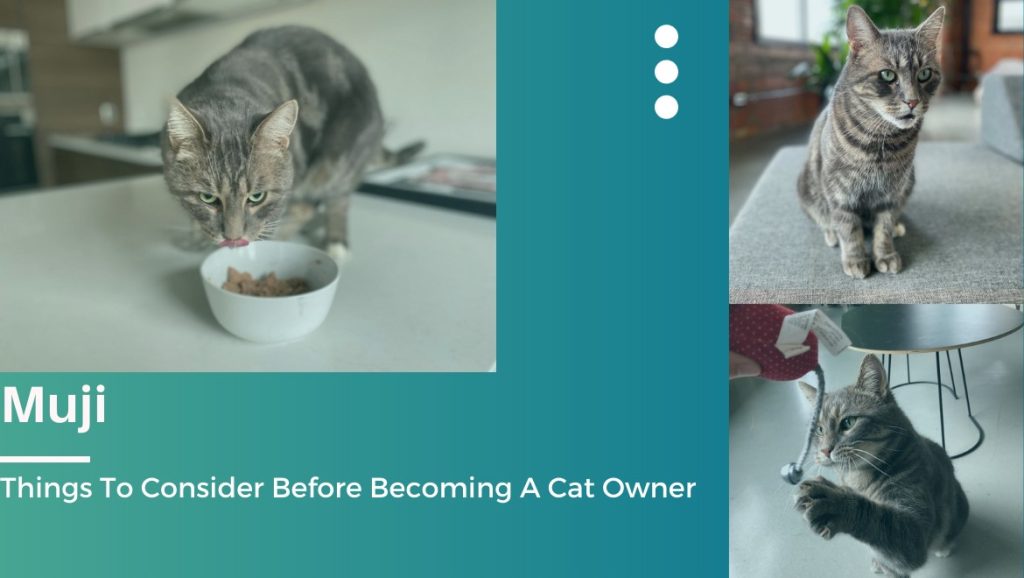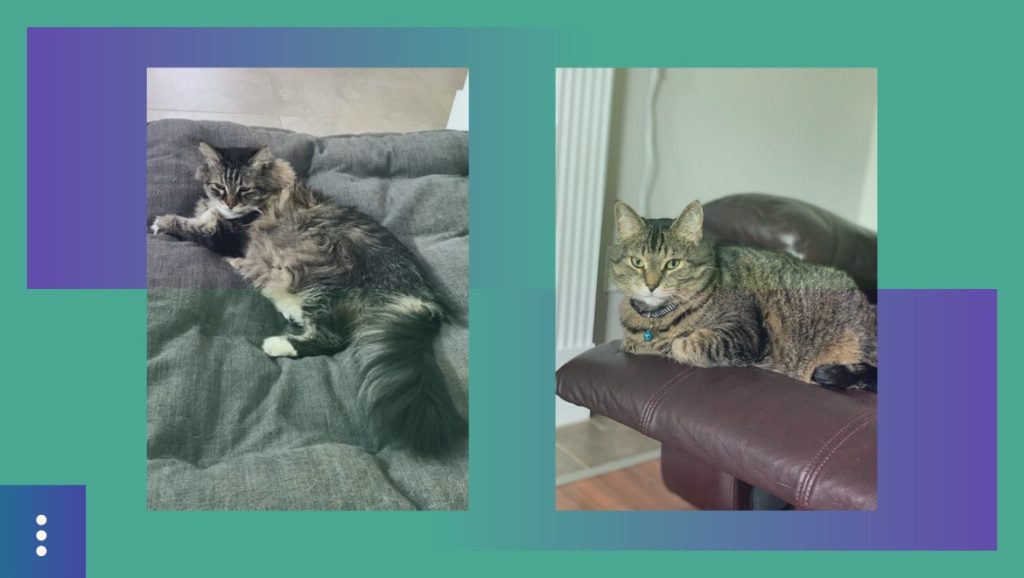Many local Edmonton (and area) animal rescues have seen a significant increase in intakes over the past several months, and many of those intakes are felines. With more people being home and December officially deemed as Cat lovers’ month, it feels like a great time to discuss some tips to consider before taking the plunge and taking a feline friend home.
Why do people often choose cats over dogs?
- Cats are typically more independent and are less maintenance to care for than dogs.
- Cats do not require as much space. If you live in an apartment and don’t have a backyard, a cat is a great pet.
- Cats are a more affordable pet. Because of their size, they cost less to feed, groom, and require fewer toys.
- Cats don’t require multiple walks a day, although there are some breeds of cats who need a lot of exercise. Ensure you do your research first!
- Cats get lonely too, especially if you’re gone for long periods, but are generally less demanding than dogs. Make sure you have a pet sitter to check in on them if you’re going away!
- Cats are playful. They do some funny and crazy stunts that make us laugh and love them even more.
- They are just so darn cute!

Muji – Things to consider before becoming a cat owner
A few important things to consider if you are new to being a cat owner:
Supplies
It is vital to be prepared to bring home a new furbaby! Here is a quick list of supplies to have on-hand before adopting. You can find these cat supplies at any local Edmonton pet store in your community.
- food/water bowls
- cat food/treats
- toys
- scratching post
- litter box and litter
- cat bed/blanket
These are the must-haves to bring home a new kitten or cat in Edmonton. You, of course, can purchase your furry friend things like beds, different toys, and extra supplies as you get to know your new furbaby and what they enjoy.

Nishu and Butters
Why should cat owners not declaw their cats?!
For starters, declawing your cat in Alberta is prohibited and inhumane.
“On July 1, 2019, the Alberta Veterinary Medical Association adopted the policy to ban and prohibit cat declawing. It states that every registered veterinarian, registered veterinary technologist, permit holder, student and other member of the Association must not perform any elective and/or non-therapeutic, unnecessary medical/surgical procedure. This specifically includes all forms of declawing cats. We will no longer be doing cat declaws for anybody ever. “ – Wetaskiwin Animal Clinic
Why has declawing cats been prohibited? The procedure involves cutting the bones where the claws grow from, with a scalpel or laser. For humans, this would be like cutting off someone’s toes or fingers at their top joint. As you could imagine, this procedure is quite painful for cats. Another disadvantage to declawing is that it is that declawing may also affect a cat’s balance.
Alberta veterinarians also voted to ban other medically unnecessary procedures that include ear cropping, tail docking, tail nicking, tail blocking, partial digit amputation, tendonectomy, cosmetic, body piercing, non identification tattooing and devocalization.
The importance of neutering/spaying
As many of you pet parents know, neutering is the surgical removal of the testicles in male animals, and spaying is the surgical removal of the ovaries and uterus in female animals. Generally speaking, cats are usually neutered/spayed around six to nine months of age, but depending on their health and circumstance, cats may be neutered/spayed earlier.
There are pros and cons to both neutering and spaying your cat below. The most known advantage is that it prevents unwanted litters. Cats have a gestation period an average of 2 months, which means cats can have upwards of 5 litters a year. Many unwanted kittens end up at local Edmonton shelters/rescues, as there are not enough homes for them.

Advantages and Disadvantages of Neutering and Spaying
Regular Grooming
Whether you brush your cat’s fur, clip your cat’s nails regularly, or take them to the groomer for a spa day, it is vital to maintain a regular grooming routine. It’s beneficial to follow these general grooming rules, brush short-haired cats at least once a week, and brush long-haired cats daily, or as often as possible.
Why brush them so often? You’ll find less hair falling from your cat onto your floor, rubbing off on your furniture, clogging up your vacuum and furnace, and turning your clothes into fur coats.
Additional benefits for your cat:
- Helps to prevent hairballs (which can cause intestinal blockages)
- Prevents the formation of mats (which cause discomfort and even lead to health risks)
- Promotes healthy shiny fur
- Gives you the opportunity to check your cat over for parasites, lumps, and bumps.
- Is often a great way to bond with your cat!
A good grooming routine also includes brushing their teeth daily, as their oral health is very important and prevents decay, plaque build-up, and infection of gums. Pro tip: Only use toothpaste that is specifically for your cat because human toothpaste contains fluoride, which is toxic to cats. Annual dental check-ups with your veterinarian are a good way to ensure your cat’s teeth and gingiva is happy and healthy!
Regular veterinarian visits and vaccinations as needed
Regular veterinarian visits are a crucial part of maintaining your pet’s health. Vets can monitor pets’ health and suggest diet, exercise, vaccinations. As cats age they should minimally visit their veterinarian once a year, cats cannot communicate that they are not feeling well and age faster than humans, your vet will gain insight into your cat’s health during these visits.
It is less painful for your cat, easier and less expensive to prevent diseases than to treat them, do not wait to go to the vet if you are concerned about your pet.
We hope this was useful and helps some of you cat lovers prepare for welcoming a kitten or cat into your home. Let us know if you ever need a hand caring for your cat. We offer 30-minute Cat Pawty Breaks where we come to feed, refresh your cat’s water, scoop/clean their litter, and even incorporate play sessions or brushings, depending on your cat’s needs. We can figure out a care plan that works best for you and your family.




